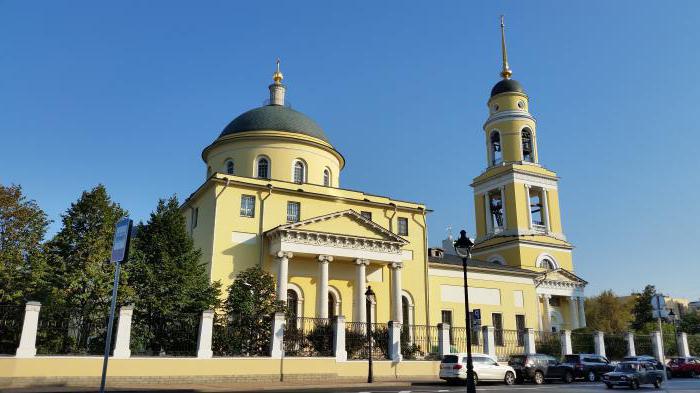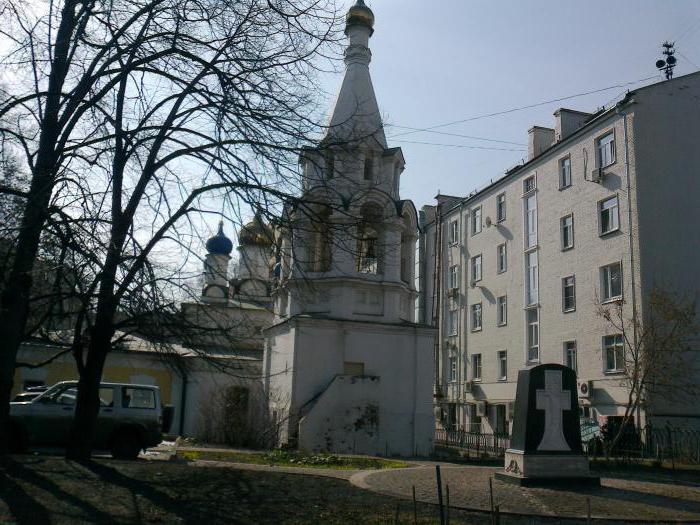In the center of Moscow, not far from the Kremlin, the Presnensky district is located. On its territory is Nikitsky Gate Square. Muscovites know her well, and it will be interesting for guests of the capital to get acquainted with such monuments as the Church of St. Theodore Sudit and the Church of the Ascension of the Lord, to see the fountain-rotunda built in honor of A.S. Pushkin and his beautiful wife, as well as the building of the former TASS.
Historical information about the square
Nikitsky Gate Square in Moscow was formed in the 15-16 centuries. In those years, there was a road from the gates of the White City to Novgorod. In 1582, a Nikitsky monastery was built near the White City , named after its founder Nikita Zakharyev. At the end of the 16th century, earthen defensive ramparts were replaced by stone ones, and at the entrance to the White City a passage gate was put up and called Nikitsky.
Moscow was built up, there was not enough building material, at the end of the 18th century the city walls together with the gates were dismantled, the vacant square was called Nikitsky Gates. The territory began to be built up with wooden houses, but the fire that happened in 1812 destroyed them. After that, buildings of stone began to be erected on the square and adjacent areas.
In the fall of 1917, as a result of battles between Red Army units and cadets, some houses were destroyed. When the Patriotic War ended, some of the old buildings were also demolished, but most of the buildings of the 17-19th centuries were saved.
Temple of the ascension
According to the Master Plan for the Development of Moscow, developed in 1940, the Ascension Church, located on Nikitsky Gate Square, was to be demolished. But because of the war, plans were postponed, and the church remained in place. She rebuilt several times.
The first stone building was built at the end of the 17th century by order of Natalia Naryshkina. A hundred years later, during the reign of Catherine the Great, the house of Prince Grigory Potemkin was set up near the church . By his order, the church began to be rebuilt into a cathedral, which he wanted to name in honor of the Preobrazhensky regiment. After his death, construction work was stopped. Attempts to resume them continued until 1812, but were unsuccessful.

In 1931, the Ascension Church (Presnensky district) was closed. The property was looted or destroyed, the bell tower was dismantled. But the memory that A.S. Pushkin and Natalya Goncharova were married in the narthex of the unfinished church did not allow a decision to be taken to demolish the cathedral. It was finally completed in 1945. Its architecture is designed in the style of classicism. The building is decorated with side porticoes with thrones inside. The church premises have very good acoustics, because of which they planned to transfer it to a concert hall. During the years of Soviet power, the premises of the cathedral were occupied by various institutions, and in the 90s they were transferred to the Orthodox Church.
Temple of Theodore Sudith
The Temple of Theodore Sudit is located in the back of the courtyard and is almost invisible from the side of the square. According to the available archival documents, it can be assumed that in the 15th century there was a wooden church that burned down in 1547 during a fire. New information about her appeared in historical documents about the Romanov dynasty. In the middle of the 17th century, at the Nikitsky Gate, the Fedorovsky Hospital Monastery was founded, the church was restored. For a long time the icon of the Smolensk mother of God was kept in it. In 1812, the temple was again damaged by fire and was finally rebuilt in 1873.

The church is famous for the fact that its parishioner was Generalissimo A.V. Suvorov. His parents are buried in a churchyard. In the 20s of the last century, the temple was closed, the towers and the bell tower were demolished. In the 80s, they wanted to open the Suvorov Museum here and began restoration work. In 1991, he was returned to the possession of the Orthodox Church, after which the five-domed church and the bell tower were restored.
Fountain "Natalia and Alexander"
Nikitsky Gate - the square on which stands the beautiful fountain "Natalya and Alexander." It is made in the form of a rotunda, in which there are bronze statues of A. S. Pushkin and Natalia Goncharova.
The rotunda is located opposite the church in which the couple was married. The fountain was opened on the occasion of the 200th anniversary of the poet. The project was developed by architects A. M. Belov and M. A. Kharitonov. The sculptures were created by M.V. Dronov. Especially crowded here in the evenings and weekends, couples often make appointments near the fountain.
ITAR-TASS building
On the square Nikitsky Gate erected the building of the agency ITAR-TASS. It successfully fit into the architectural ensemble of old-built houses, but remained an original architectural element.
The nine-story building has the shape of a cube. Huge windows the size of two floors resemble television screens. The facade is decorated with large symbols with a sculptural emblem of the news agency. The building was built in 1976, but it looks modern today.
Theater "At the Nikitsky Gate"
The theater is located in the house, which belonged to Princess G. O. Putyatina, and belongs to the buildings of the early 19th century. The hosts changed several times in it. In 1883, the third floor was added to the house, decorated with stucco elements. Until the end of 1903, it housed an industrial museum, art school, and music school. Ten years later, a cinema was opened in the building, which since 1939 became known as the “Cinema of the second film." He was very fond of Muscovites. Old Soviet and foreign films were shown here. In the 90s, the cinema was closed for restoration, and in 1999 it housed the Nikitsky Gate Theater. Currently, the theater hosts productions of musicals, dramas, and poetic performances.